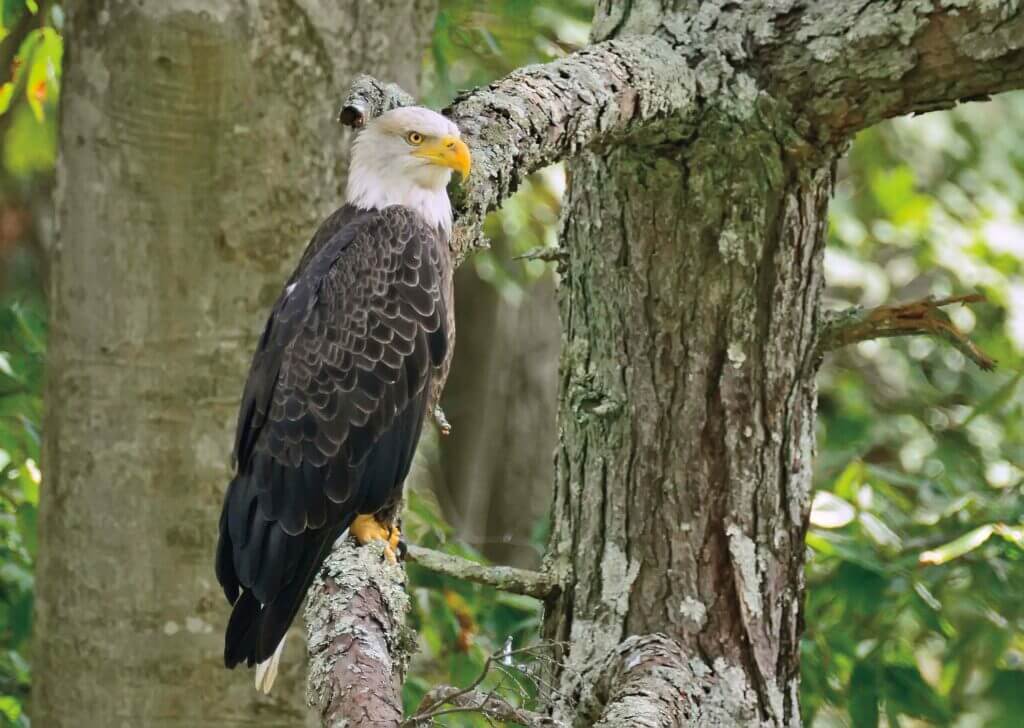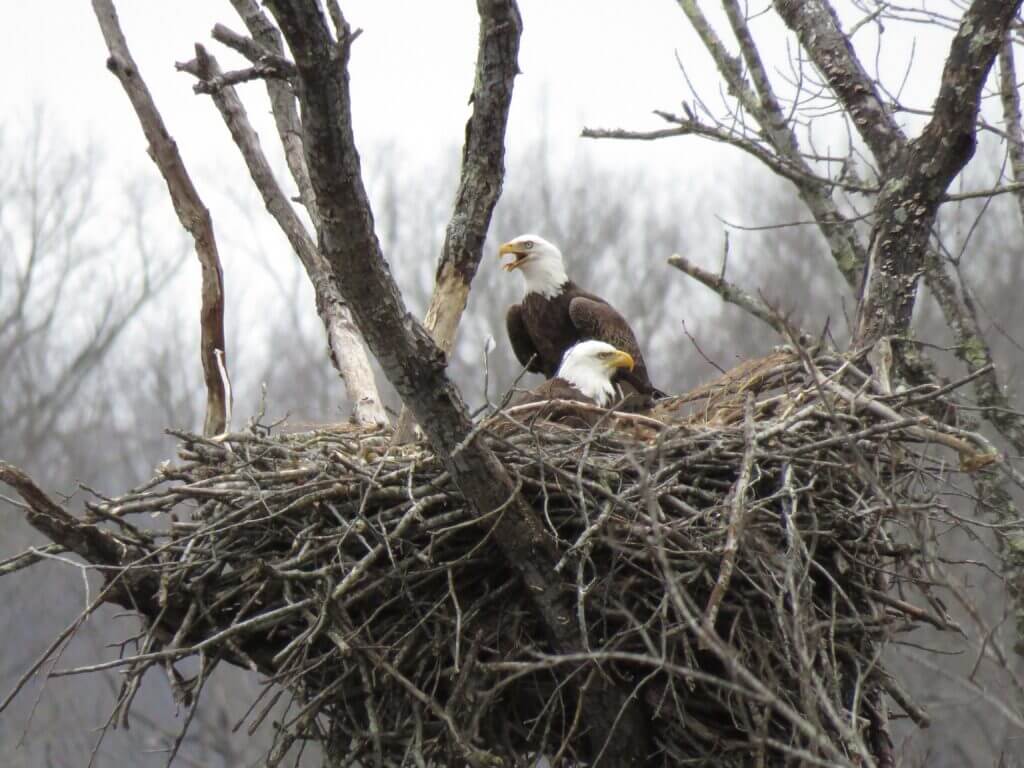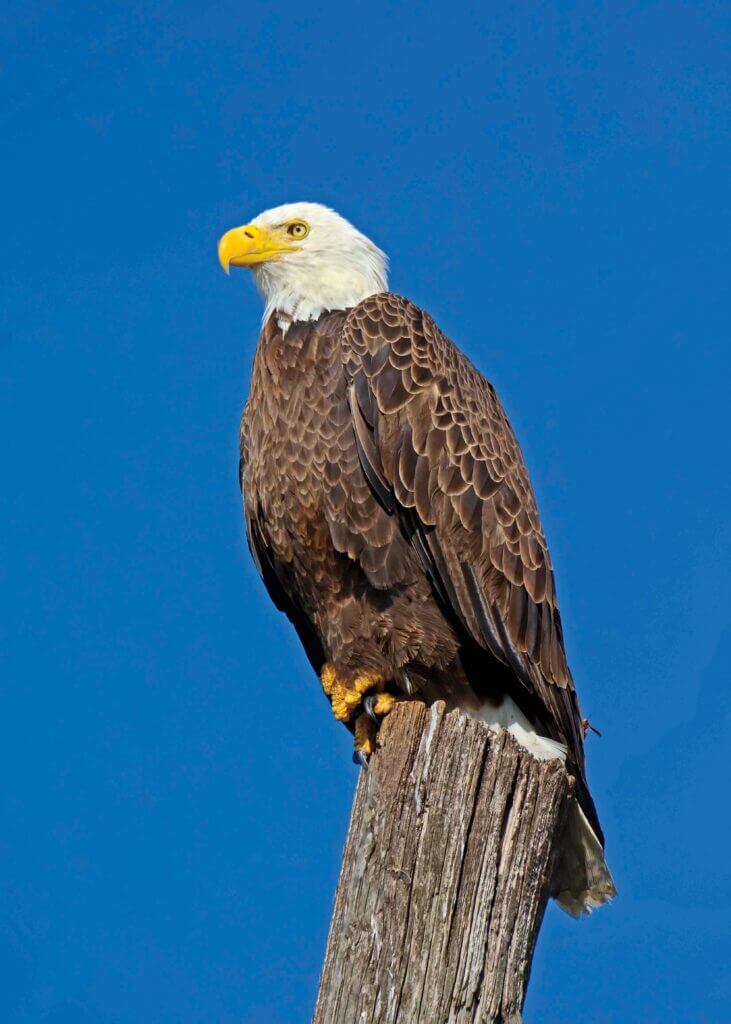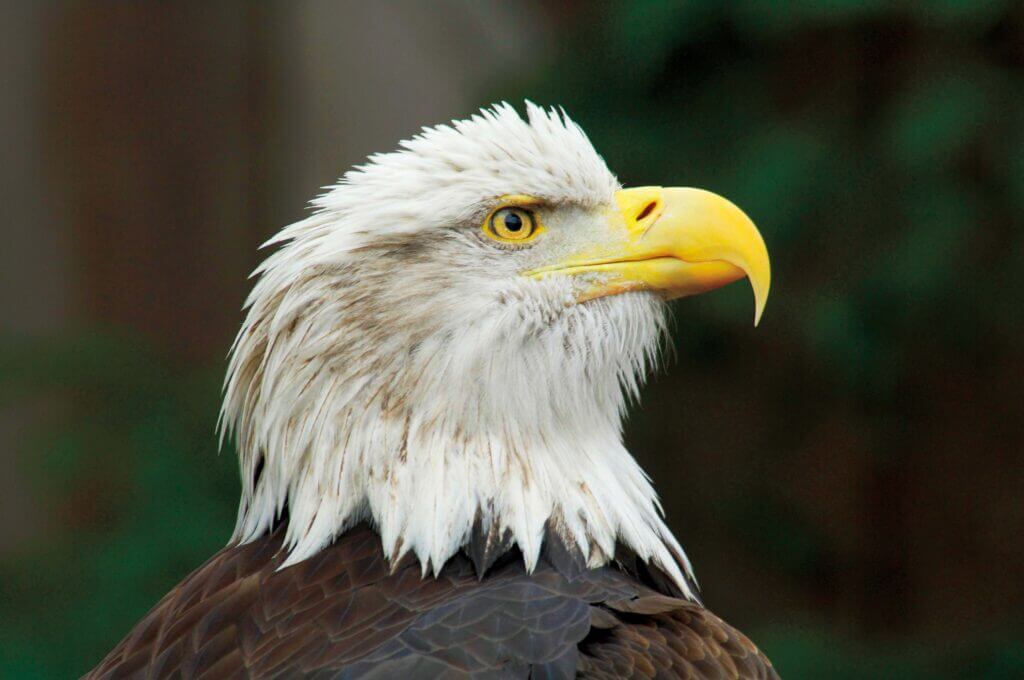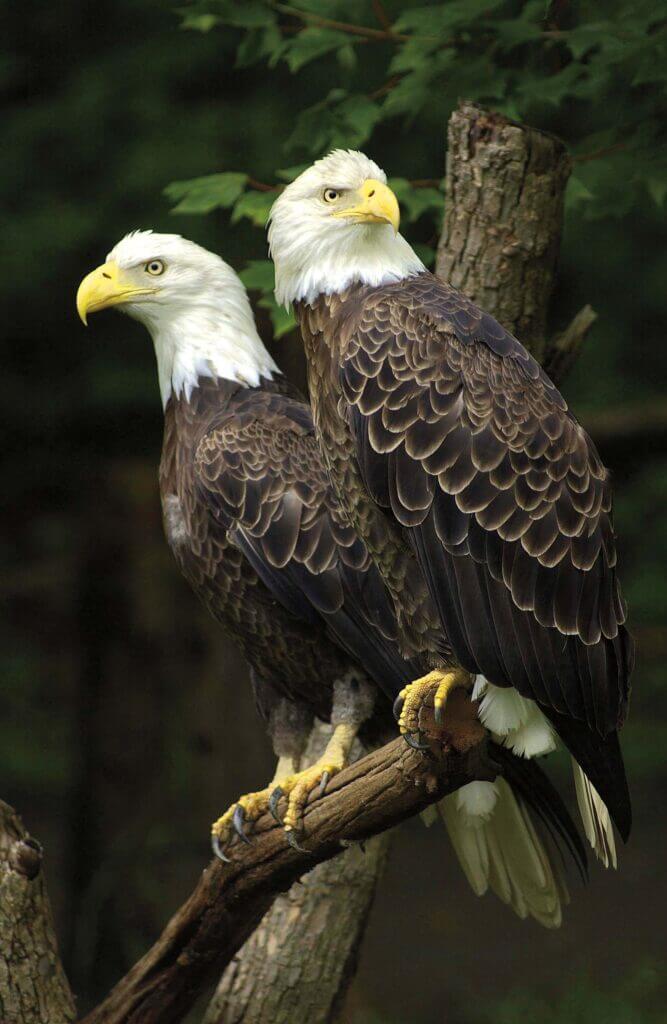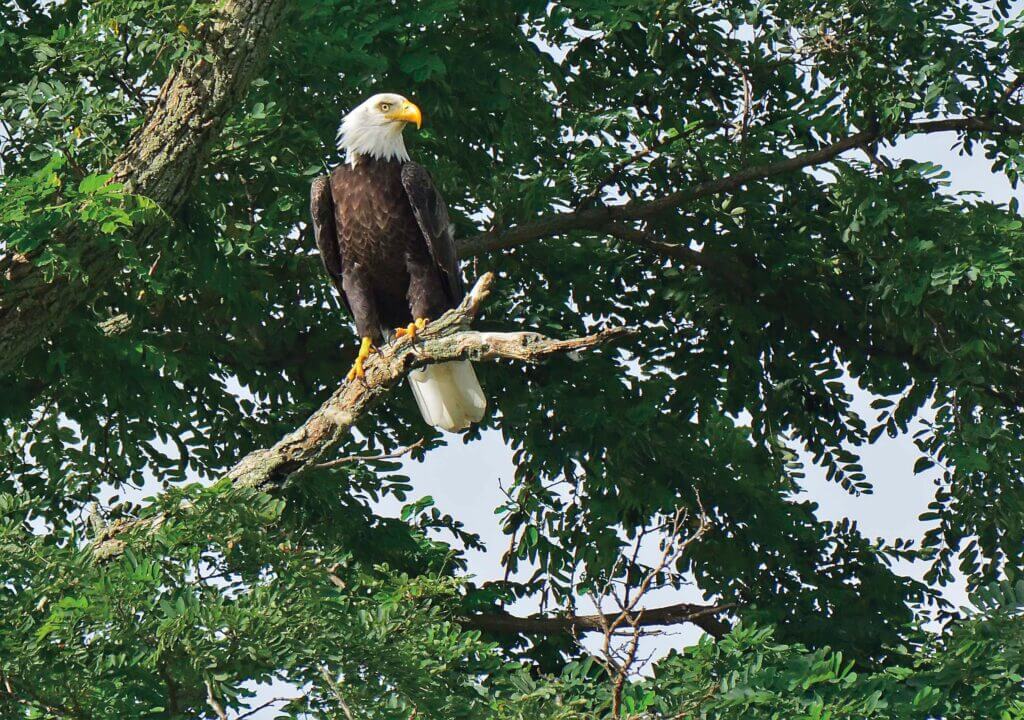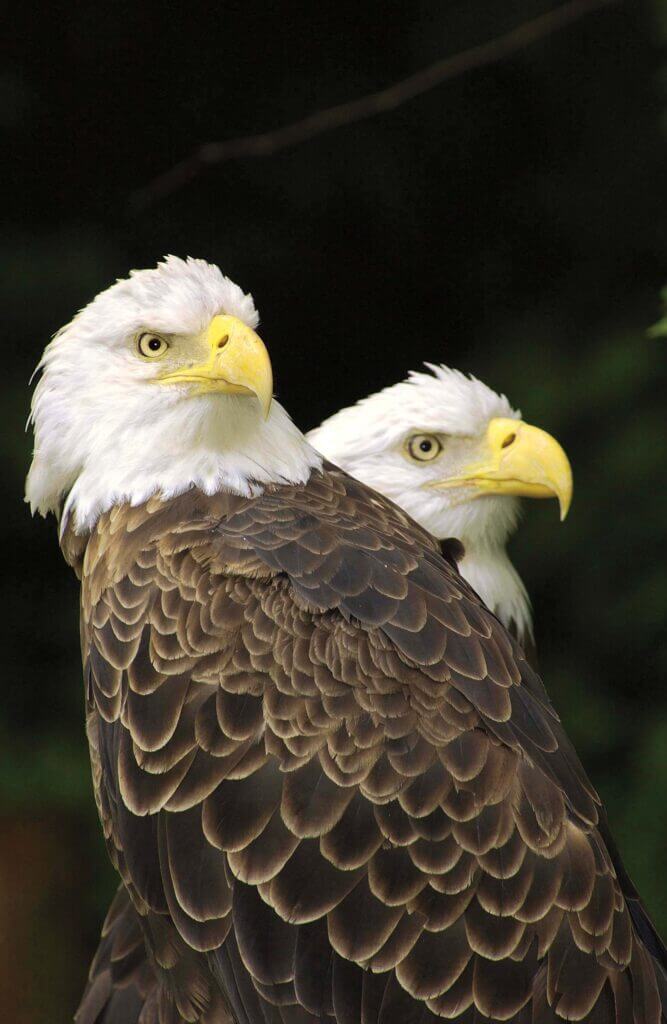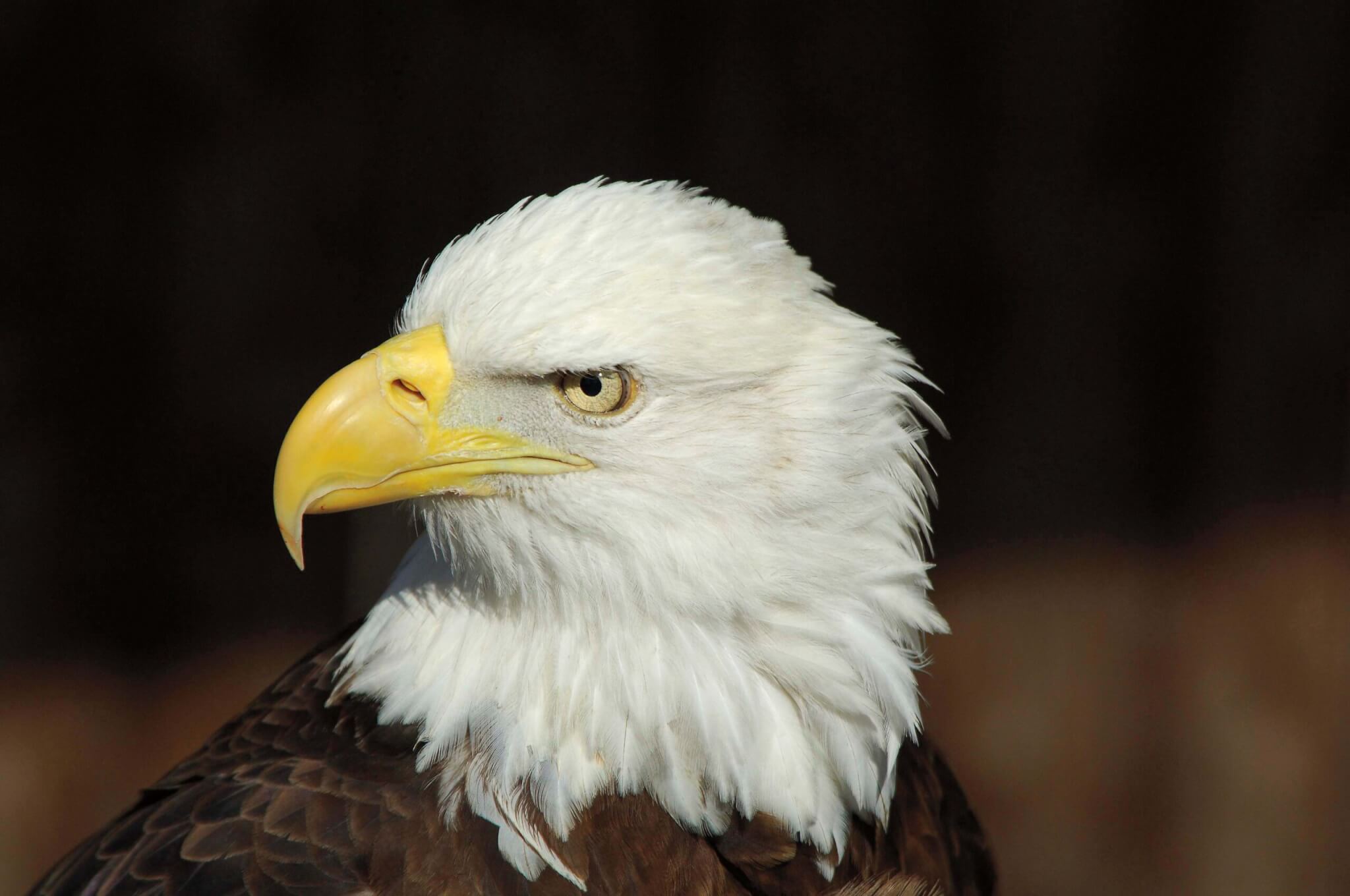

After decades of decline, bald eagles are back.
This story was originally published in the March 2018 issue of Wonderful West Virginia. To subscribe, visit wonderfulwv.com.
written by Jake Stump
photographed by Steve Shaluta
Spotting a bald eagle soaring through the West Virginia skies a half-century ago would have been a rare spectacle. By the early 1980s, the bird was so scarce in West Virginia that the Division of Natural Resources reported only one bald eagle nest in the entire state, located in a trough near Moorefield, Hardy County.
Back then, the United States’ national animal was on the verge of extinction. A variety of factors—ranging from the widespread use of pesticides to the logging industry to actual government-sponsored bounties on dead birds—led to dangerously low eagle populations.
But bald eagle populations have recover, slowly and surely, thanks to wildlife preservation efforts and the banning of certain pesticides. The U.S. Fish and Wildlife Service removed the bird from its list of endangered and threatened wildlife in 2007.
Today the DNR has documented at least 86 bald eagle nests in West Virginia, says state ornithologist Rich Bailey. “The number of active nests increases every year. The steady increasing trend—about five or 10 percent annually—shows no signs of abating,” Bailey says.
Learning from Our Mistakes
To understand the reemergence of the bald eagle, one must look at what led to its near demise.
There may have been as many as 100,000 nesting bald eagles in the nation when the Founding Fathers selected the bird to appear on the Great Seal of the United States in 1782. But by the 1950s, only around 400 nests were known.
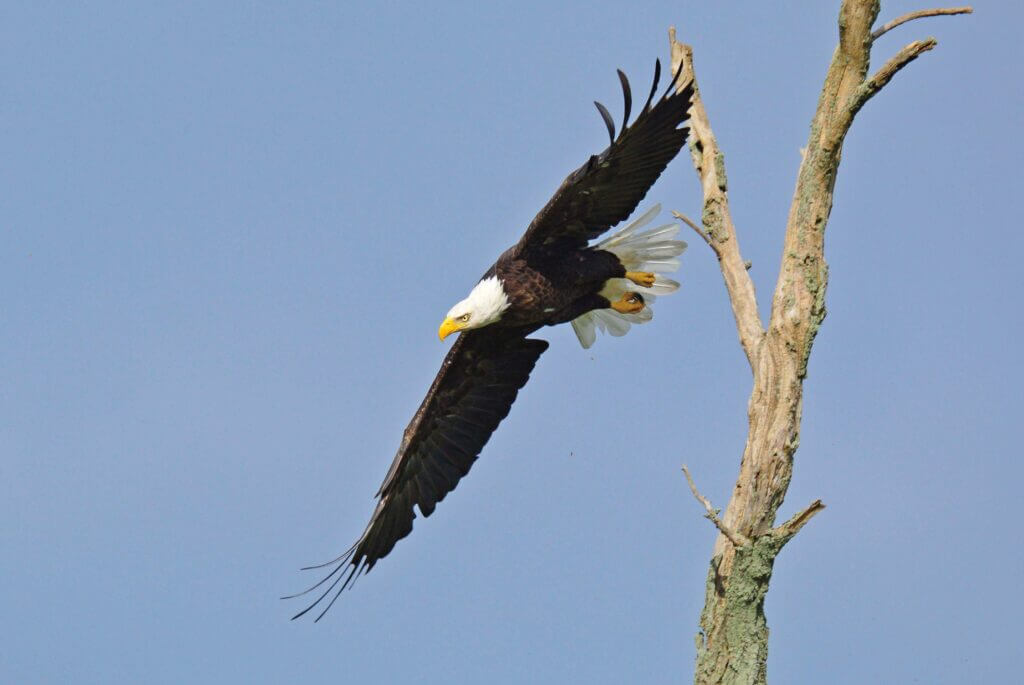
Perhaps the greatest contributor to this decline was DDT, a popular pesticide widely used to kill common pests like lice and mosquitoes. “We started seeing wide use of DDT for insect control after World War II,” says Jim Phillips, a retired naturalist who still monitors the bird through regular surveys at Pipestem Resort State Park. “The excess ended up being washed into the water systems. Smaller organisms took it in and they went up the food chain. Soon ospreys and pelicans and eagles were eating fish with high levels of DDT and were unable to raise babies.”
Although DDT was not itself lethal to eagles, it disrupted the birds’ calcium metabolism. The pesticide could make the birds sterile and cause females to lay unhealthy eggs with thin shells. These problems began to subside when the U.S. government banned DDT in the 1970s.
Compared to other states, West Virginia did not have a huge population of bald eagles to begin with. Eagles thrive in environments near water, and the lack of large fish-laden bodies of water kept the populations relatively low. The logging industry also might have driven wildlife away at the turn of the 20th century. “There was a big logging boom in West Virginia timber into the early 1900s,” Bailey says. “There may have been a scarcity of suitable nest sites, since they usually nest in very large trees.”
But now, many of those forests have grown back and the state has many more bodies of water. “We have the Ohio River and the New River, but once people added more ponds, lakes, and dams, that helped improve the eagle population throughout West Virginia,” Bailey says.
And, up until a few decades ago, it wasn’t uncommon for people to shoot eagles. Around the turn of the 20th century, state and federal agencies even offered hunters as much as $2 per bird because they were considered a nuisance to farms and livestock. The problem of human predation largely ended in 1973 when Congress enacted the Endangered Species Act. Bald eagles were among the first animals to be protected by the law.
Birds as Barometers
Nowadays, life is good for bald eagles in West Virginia. Food is abundant—the state’s waterways are stocked with fish, and the birds often feed off of roadkill and deer carcasses.
The birds are now found in many more places than that single trough in Hardy County. During the winter breeding season, eagles stay within close proximity of water. “Nests started showing up along the Ohio River, from Huntington to Liverpool, Ohio, and in the Eastern Panhandle,” Bailey says. “The Cacapon and Potomac watersheds are great spots, and there’s a sizeable population along the New River watershed.”
During non-breeding season, it’s not uncommon to see eagles all over the state, although sightings are a little more rare in the coalfield counties. “The water quality for the birds is poor and there’s not a lot of good food or fishing for them,” Bailey says.
For Bailey, eagle gazing isn’t quite the rare treat it used to be. “Encounters with the public are becoming more common,” he says. “Although it’s not the ‘holy cow’ moment it once was, an eagle sighting is still neat to see.”
Bailey urges the public to report any eagle nest sightings to the DNR so it can monitor them. You can also join Phillips and other volunteers on their annual eagle surveys, one in January and one in March, in the Bluestone–New River area. “I still watch them and get excited,” Phillips says. “I’ve seen many people become bird watchers just from their first sighting of an eagle.”
But bald eagles’ comeback isn’t good news for just birders. Phillips says the vitality of the species says a lot about West Virginia as a whole.
“Birds are a barometer of the environment. If they’re having trouble, what’s bothering them will eventually bother people, too. You can judge the health of an environment by the birds.”
If you spot a bald eagle in the wild, call 304.637.0245 or send the date, time, and location to: Wildlife Resources, West Virginia Division of Natural Resources, P.O. Box 67, Elkins, WV 26241.

